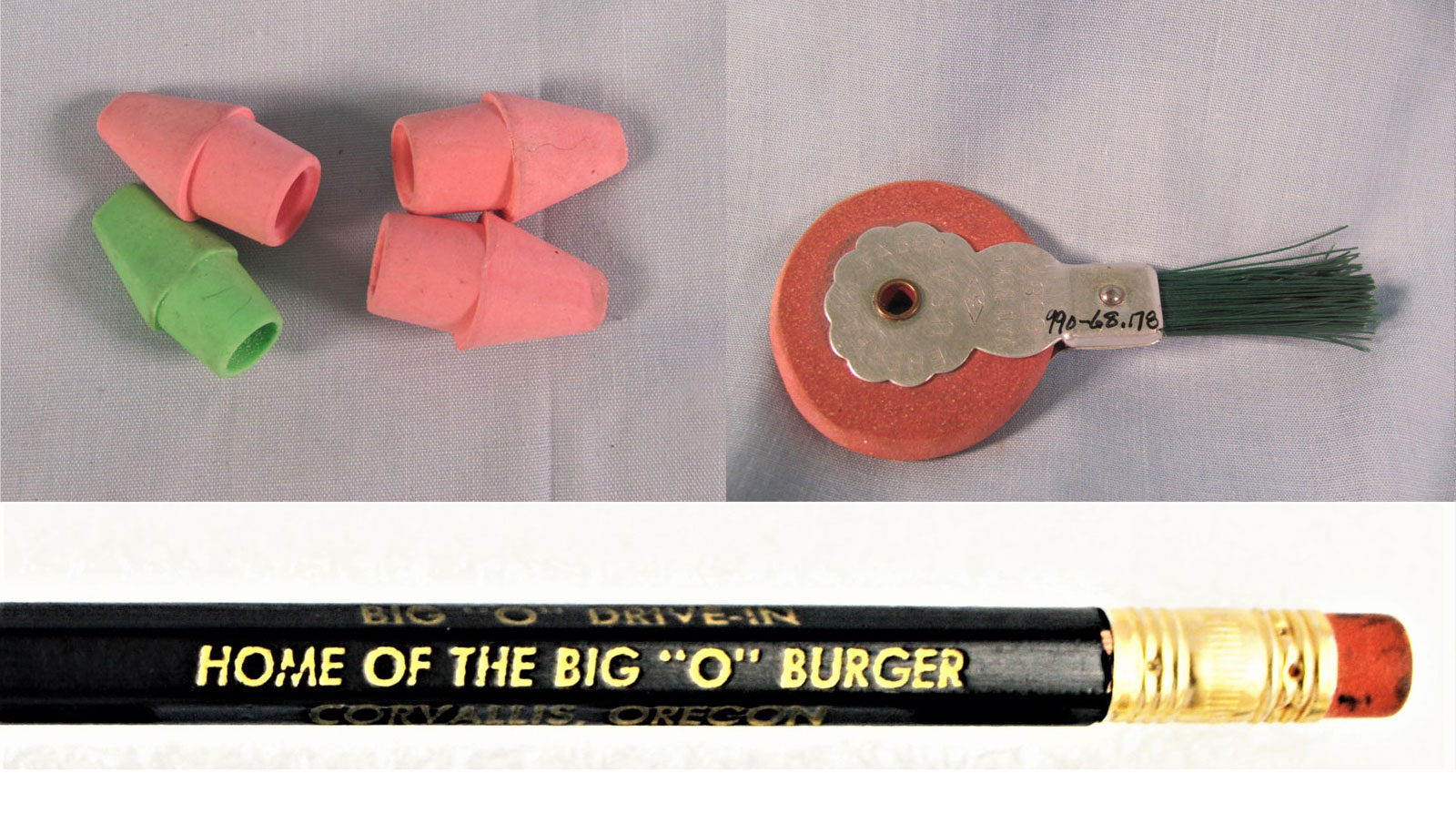These objects from the museum’s collection have something in common.

All are or have erasers. The first photograph shows pencil top erasers provided to the 2000 Census takers. The second is a typewriter eraser with an attached brush. The last is a standard pencil with an eraser attached by a metal ferrule. Most of the erasers are shades of red or pink.
Erasers were first produced in England in 1770. Originally, they were made of rubber from a South American tree. Producers soon discovered that adding an abrasive such as glass powder or pumice to the rubber improved its performance. Pumice is a volcanic glass solidified into a porous, rough-textured rock. It can be white, black, gray, yellow or red, depending on the minerals present.
The Eberhard Faber Pencil Company began attaching erasers to the end of its pencils in the early 1900s. Because of the particular Italian pumice the company used, the erasers were pink. The company also began making separate erasers and marketing them to the burgeoning school market in 1916. At some point, these erasers acquired the name “Pink Pearl.” With generations of school children using these erasers, people began to expect erasers to be pink or at least some shade of red. Even today, when erasers are made of synthetic materials instead of rubber and pumice, they are dyed pink to meet consumer expectations. The pink erasers are primarily an American phenomenon. Pencils in Europe are less likely to come with attached erasers and handheld erasers are usually white or gray, not pink.



